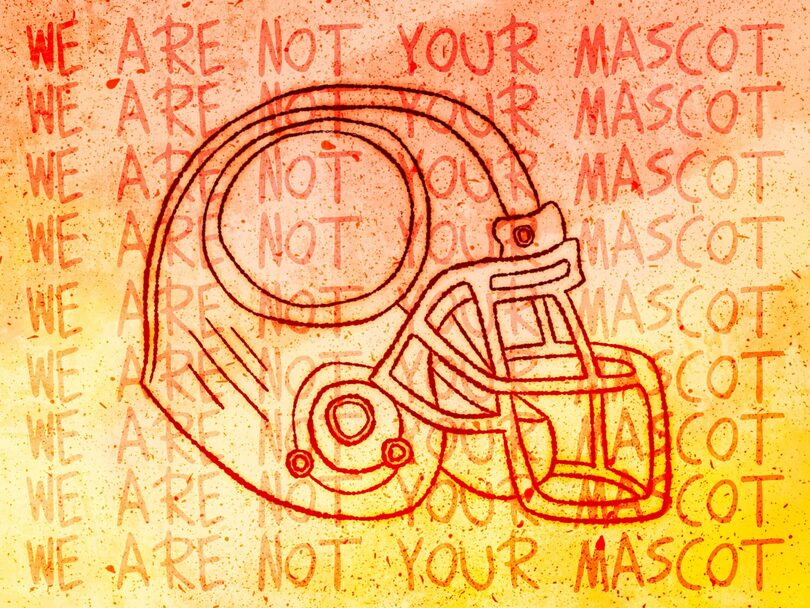Kansas City Chiefs’ racist name, chant reminiscent of Anti-Indigenous sentiments

In Super Bowl LVII, the Kansas City Chiefs were centerstage. But in light of this, our columnist reflects on the harmful stereotypes the Chiefs’ name promotes. Remi Jose | Illustration Editor
To support student journalism and the content you love, become a member of The Daily Orange today.
This Sunday, the Philadelphia Eagles and the Kansas City Chiefs faced off in the 57th annual Super Bowl. The game is one of the most highly anticipated sporting events, bringing in more than 208 million viewers from across the country last year. Despite the event being one of the most highly awaited among sports fans, it is time to consider how the game’s popularity continues to reinforce harmful stereotypes.
In recent years, the Kansas City Chiefs have attracted widespread criticism from Indigenous activists for their name and what is known among their fan base as the “tomahawk chop” — a celebration used among Chiefs fans that takes inspiration from Indigenous culture.
The Chiefs’ chant and name bring into question the effects of portraying such widespread stereotypes throughout popular media and sports, as they are harmful to the communities they are supposed to represent. Indigenous activists have explained how the team’s staple identifiers are in fact appropriations of Indigenous people and are not pieces to be utilized solely for entertainment by outside cultures.
The Kansas City Chiefs are not the only team responsible for such behavior. Instances of appropriating Indigenous culture in sports can be found in 14 other teams, the most infamous being the previous name of the Washington Commanders: the Redskins. We can even find harmful stereotypes within Syracuse University’s own sports-related history, like with the Saltine Warrior, Otto’s predecessor as SU’s mascot.
Cultural appropriation is a massive problem throughout the country. Dressing in traditional clothes that do not belong to one’s own culture or using another culture’s imagery without consent sends the message that culture and identity is not worth respecting. This could not be further from the truth, as a person’s culture is a crucial part of their identity and deserves to be respected.
Taking advantage of stereotypes about other cultures has the potential to further harmful agendas against those in the community. This can lead to a rise in unwarranted hate against certain groups of people solely because of the culture they celebrate. For the Indigenous community, it causes erasure as it ignores the cultural meanings, rituals and values of the diverse tribes. As a society, we’ve allowed racist and outdated depictions to be perpetuated even while Indigenous people have asked that we respect their demands.

Stephanie Zaso | Design Editor
The American appropriation of Indigenous culture is in no way new to sport, but it’s not an excuse to continue harmful practices. By allowing teams that cater to the stereotypes of certain cultures to keep the same traditions, we allow harmful stereotypes to be reinforced among the general population.
Instead of enforcing limited concepts of culture among the American public, sports teams like the Kansas City Chiefs should take responsibility for the imagery they use in their branding and change it to something more acceptable. Such actions have already been undertaken by the aforementioned Washington Commanders and it is time the Kansas City Chiefs follow suit.
These teams should take advantage of their popularity to educate their fans on the importance of respecting different cultures. Using their platform at a widespread event such as the Super Bowl would have provided a phenomenal opportunity to contribute to the conversation of cultural appropriation.
It is clear that the Kansas City Chiefs have a lot of work to do before they can be considered to be a role model for proper representation. Not only do they need to listen to Indigenous activists about the realities of the imagery they choose to represent their branding, but they need to take advantage of their reach to further educate football fans as to why their branding is harmful to Indigenous communities.
Grace “Gray” Reed is a Sophomore magazine, news and digital journalism major. Their column appears bi-weekly. They can be reached at greed04@syr.edu.





